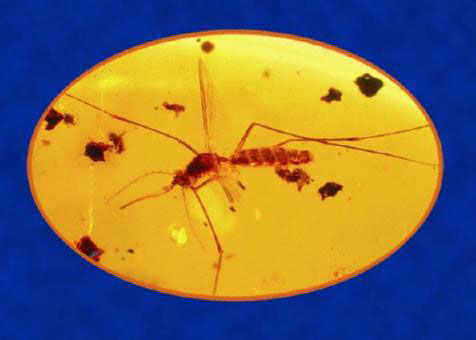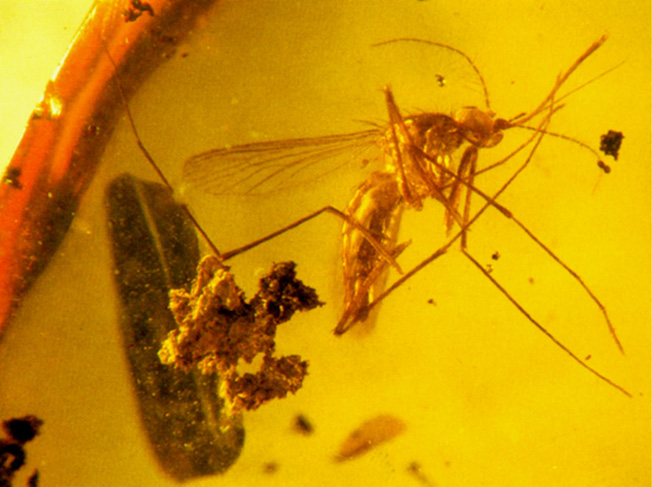B3 PRESERVATION IN AMBER:
The film, Jurassic Park, popularized the notion that viable dinosaur DNA could be recovered from fossil dinosaur blood contained in the fossilized bodies of contemporary mosquitoes or other blood-sucking insects. The idea here is that if, soon after biting a dinosaur, the mosquito had the misfortune to become encased in tree sap oozing from a crack in the bark of a tree upon which it had come to rest, dinosaur blood would be preserved along with the mosquito. This is because tree sap is an uncommonly stable material that upon fossilization converts to a very hard, resistant substance called amber. Disarrayed DNA and DNA by-products of fossil animals have in fact been recovered from just this sort of scenario.

Mosquito fossil amber pieces showed were recovered from Cretaceous sediments of the New Jersey coastal plain. We know from fossil discoveries that during the Cretaceous, what is now New Jersey contained a large and diverse population of dinosaurs. The amber is thus of the correct age and location to contain dinosaur DNA.

B3.1 Looking at the pictures, can you discern if we are looking at fossilized insects? The definiton of a fossil is as follows: "the remains or impression of a prehistoric organism preserved in petrified form or as a mold or cast in rock."
B3.2 Read these three articles below. What are the possibilities of recovering the DNA of the ancient creature and cloning it similar to that in the movie "Jurassic Park"?
NATURE - Journal of Science - "Blood-filled mosquito is a fossil first"
SMITHSONIAN MAGAZINE - "A Fossilized Blood-Engorged Mosquito Is Found For the First Time Ever"
NATIONAL GEOGRAPHIC - "Blood Found in Mosquito Fossil: “One of a Kind”"

Click here to go back to Mode of Preservation
©J.A. Chamberlain, Jr. - Brooklyn College - Earth and Environmental Sciences